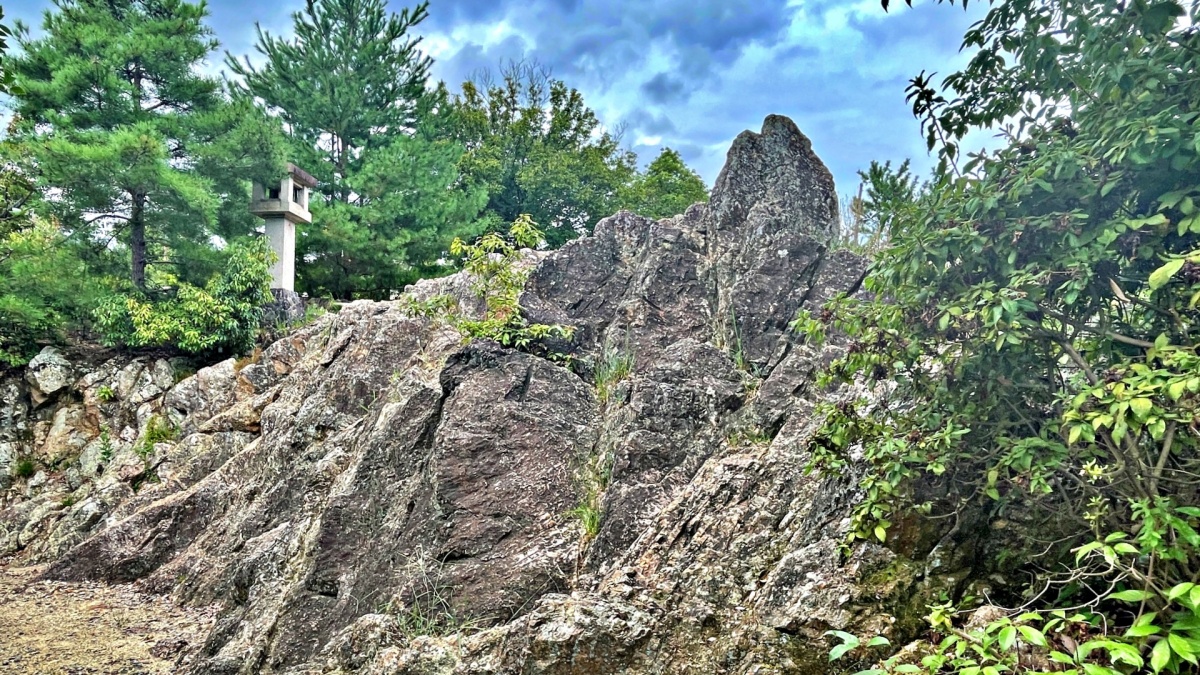Mount Funaoka in Kita-ku, Kyoto City is located on the northern extension of Suzaku-oji, which runs north to south through the center of Heiankyo, and is known for being the northern base of Emperor Kanmu when he founded Heiankyo. By sealing away the god Genbu to protect the city, it became a city of longevity that lasted more than a thousand years.
However, Mt. Funaoka is more than just this, it is a small mountain that is full of mysteries the more you learn about it.
In this article, we will introduce the mysterious story of Mt. Funaoka, which can be described as otherworldly.
“Funaoka Myokensha” and “Funaoka Okusha” located in the precincts of Kenkun Shrine
Halfway up Mt. Funaoka is Kenkun Shrine, which is dedicated to Oda Nobunaga. The entire area behind the main shrine from the west side of the south approach, which is within the precincts, is prohibited from entering.
The restricted area is not the summit of the mountain, but it is a small mountain shaped like a hill and covered with virgin forest, and there is no doubt that Genbu Daimyojin is sealed here.
As proof of this, on the west side of the south approach (behind the chozuya) is Funaoka Myokensha, which is dedicated to Genbu Okami. And there is a sign that says, “Funaoka Myokensha is dedicated to Genbu Okami, the local deity of Mt. Funaoka.”
However, if this large restricted area was the place where Genbu Daimyojin was confined, it would seem that its size was similar to that of a dinosaur.

Funaoka Myokensha
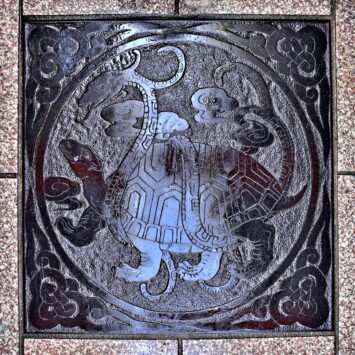
Genbu’s image
Funaoka Okusha can be seen near the summit of Mt. Funaoka (to the east of the summit, within the grounds of Kenkun Shrine), but it is unclear what is enshrined there.
However, the history of the spiritual gathering at Imamiya Shrine (a shrine adjacent to the north side of Mt. Funaoka) states that “In 944 (the 5th year of the Shōreki era), a portable shrine was set up for the god of epidemics, and it was enshrined on Mt. Funaoka to console the gods and pray for the suppression of the epidemic.
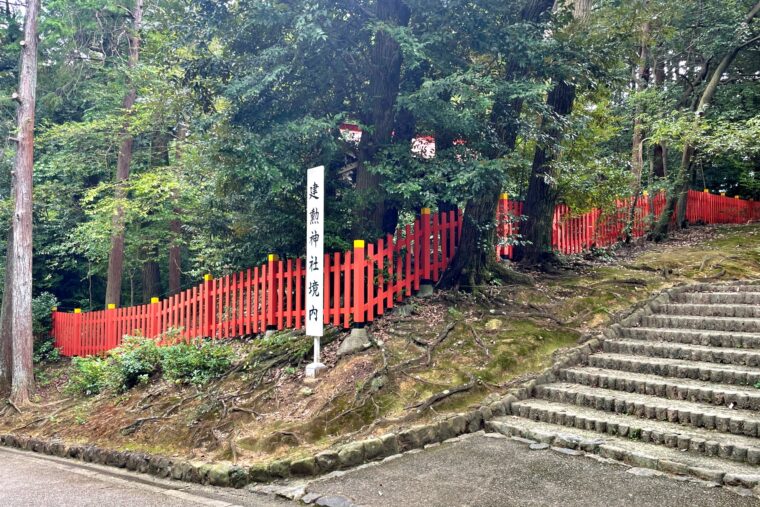

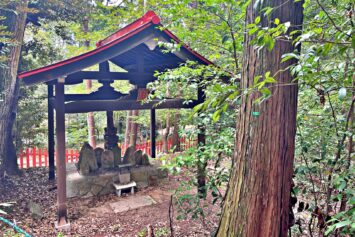
Iwakura at the summit of the mountain
Mt. Funaoka is made of a sedimentary layer (rock) called chert, and its running and inclination direction match that of the chert of the Atago Massif, and it belongs to a stratum group called the Tamba Group.
As a result, there are places where the bedrock is exposed throughout Mt. Funaoka, and strangely shaped rocks are exposed at the top of the mountain. This is called “Iwaza” and has been considered as the Yorishiro of Genbu since ancient times (a Shinto term meaning something that divine spirits approach, and is called Yorishiro/Katashiro).

Iwakura
This Iwaza is said to have mysterious powers, and there are records of a number of rituals being held at this location after the Heian capital was founded.
One of these concerns the spiritual gathering at Imamiya Shrine. In the “Nihon Kiryaku,” it is written that “As an epidemic spread in the capital, Emperor Ichijo stopped the epidemic by placing a mikoshi on the summit of Mt. Funaoka and holding a festival.”
In addition, “Sandaijitsuroku” edited by Fujiwara Tokihira, Sugawara Michizanane, and Okura Yoshiyuki describes the outbreak of a large number of pests that devoured grains around the capital in 858 (Tenan 2).
It says, “People were not able to survive on the food they had stored, but the following year, in 859 (1st year of Jogan), the same pests appeared and many people starved to death, causing food shortages in the capital.” There is also a legend that when the Emperor ordered the Onmyoji to take countermeasures and pray on the Iwaza, the pests disappeared instantly.
It’s hard to believe, but the fact that there are such records in Nihon Kiryaku and Sandai Jiroku suggests that Iwaza at the top of Mt. Funaoka has some kind of mysterious power.
Mysterious stone Buddha statues are enshrined everywhere
Mount Funaoka is the site of the Battle of Funaoka, and a stone marker with the words “Onin Eisei Battle Site Mount Funaoka” engraved on it stands next to Funaoka Park.
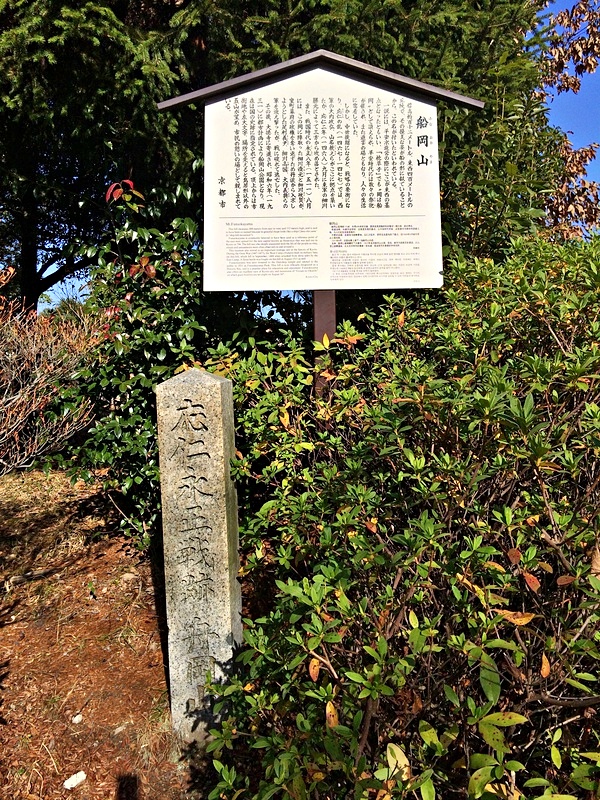
This stone marker is a nationally designated historic site, marking the site of the Onin-Eisei War, so there is nothing strange about it. However, apart from this, there are stone Buddha statues and tablet monuments of various sizes enshrined all over Mt. Funaoka, and it seems that people still come to worship there, and water is always poured into a tea ceremony pot.
I thought that these mysterious stone Buddhas and tablets were meant to commemorate the souls of those who died in the Battle of Funaoka, but they are actually meant to memorialize ancestors who had no graves, and are a remnant of Mt. Funaoka being a burial ground.
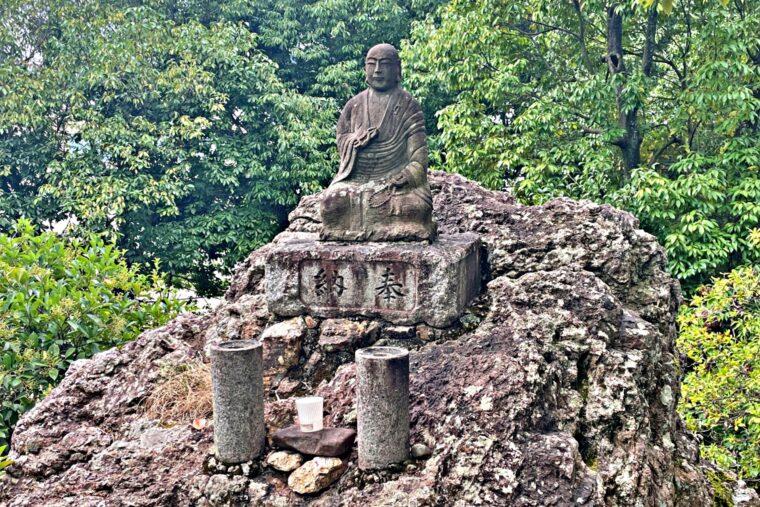
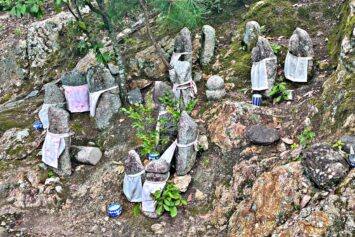
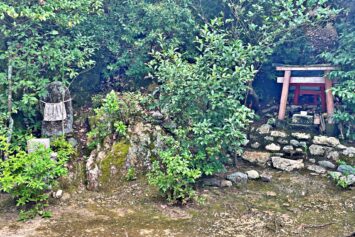
Funaokayama, which was a burial place
There are three major funeral grounds in Kyoto: Adashino, Toribeno, and Rendaino. Mt. Funaoka is a part of Rendai-no and was used as a “ Wind burial place” at the beginning of the Heian period.
A wind funeral is a funeral method in which a person’s body is returned to nature by being placed in the natural environment and exposed to the wind, rather than being cremated or buried. Around the body, stones and other stones were piled up to create a wind burial.
By the way, there is a road called “Senbon-dori” that runs north-south on the west side of Mt. Funaoka. It is said that the name “Senbon-dori” came from the fact that there were 1,000 sotoba statues lined up along the street.
At Rendaino (Mt. Funaoka), wind funerals were performed in this way, but later cremation was also performed, and Emperor Nijo was also cremated here.
On the west side of Mt. Funaoka, there is a temple called Jobon Rendai-ji Temple, famous for its red weeping cherry blossoms, and its original role was as a memorial for those who were cremated on Mt. Funaoka.
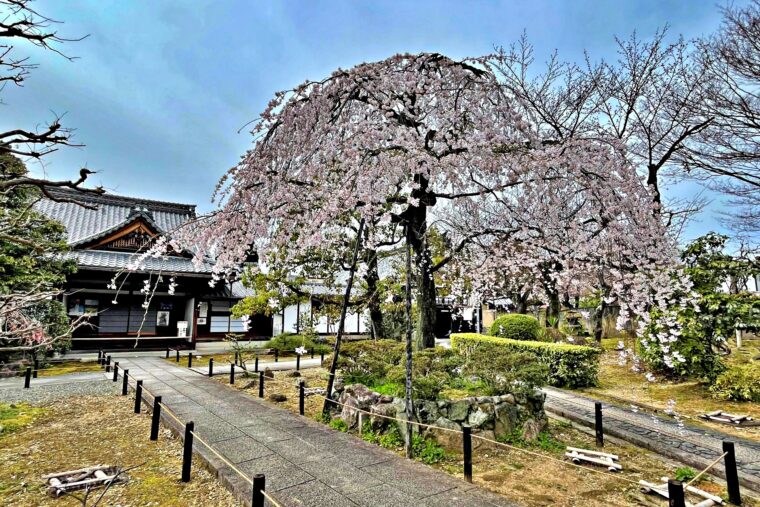
Funaokayama was used as an execution site
Mt. Funaoka is also the place where Minamoto Tameyoshi, who fought as the main force of the retired Emperor Sutoku, who was defeated at Hogen Noran, and his children were executed.
The Hogen Rebellion was a battle that occurred in 1156 (first year of the Hogen era) due to conflicts between Emperor Goshirakawa and Retired Emperor Sutoku due to the issue of imperial succession and a civil war among the regents.
The retired Emperor Sutoku was defeated and exiled to Sanuki, where he later became known as one of the “three great vengeful spirits.”
The legend of Tsuchigumo
If you follow the history of Mt. Funaoka, there are many ghost legends left behind as it is the place where countless people died. Among them, the most famous one is the Tsuchigumo Legend.
It is said that the monster Tsuchigumo once lived around Rendaino (Mt. Funaoka), and was exterminated by Minamoto no Yorimitsu, the third generation of the Seiwa-Genji clan, and his Four Heavenly Kings. The setting is “Jobon Rendaiji Temple”, and the grave of Minamoto no Yorimitsu is located in the temple’s cemetery.
The legend of Tsuchigumo
One night, Yorimitsu was suffering from a fever of unknown cause, and a Tsuchigumo monster in the form of a monk tried to tie him up with a rope. Surprised, Yorimitsu slashed him with his famous sword, “Hizamaru,” and then fled into an old mound within Rendaiji Temple.
When Yorimitsu’s Four Heavenly Kings followed and uncovered the old mound, they found an injured Tsuchigumo monster devouring carrion. It is said that when the Four Heavenly Kings caught the Tsuchigumo, stuck it on a metal skewer and exposed it to the riverbank, Raiko’s fever quickly recovered.
By the way, the spider mound where Tsuchigumo was enshrined has now been moved to Higashimukai Kannonji Temple, located south of Kitano Tenmangu Shrine. Minamoto no Yorimitsu Ason’s mound, which is related to the slaying of the Tsuchigumo, remains on an old muku tree that stands in the graveyard of Jobon Rendaiji Temple.
The Showa era was a famous place for suicide
The current Mt. Funaoka has been improved, and in 1933, the Mt. Funaoka Park, which has an area of over 56,000 square meters, was opened. The mountaintop has become known as a night view point where you can see Kyoto city, Mt. Daimonji, and Mt. Hiei, but even today, if you deviate a little from the mountain path, you will find yourself lost in a dense virgin forest.
Even today, few people enter this primeval forest, and it was a popular suicide spot during the Showa era. In addition, in May 1984, a former police officer summoned a police officer from the Junibō Police Station (a police station located south of Jyōshō Rendaiji Temple) to Mt. Funaoka, where a tragic incident took place at the summit. It’s nearby.
Since this incident, the Juunibou Police Station has been unmanned (there is a telephone), but people who pass by in the middle of the night have started hearing ghost stories about seeing figures.
Current Mount Funaoka
Mt. Funaoka is an elegant small mountain with an altitude of 112 meters (45 meters relative height), a circumference of 1,300 meters, and an area of 25,000 tsubo, and although it is an urban area, it still retains its lush nature.
It was designated as a Kyoto City Scenic District in 1931 (Showa 6), a National Historic Site in 1968 (Showa 43), and one of Kyoto Prefecture’s “Kyoto 200 Nature Selection” in 1995 (Heisei 7).
Although it is a night view point where you can get a panoramic view of Kyoto City, Mt. Daimonji, and Mt. Hiei from the summit, it is also recommended to take a walk during the day as there are beautiful flowers planted within the park.

